What is Japanese hell like? What happens when you fall into it? Have you ever wondered about such questions? Japan’s concept of the afterlife is a unique blend of Buddhism, Shinto, and various folk beliefs, resulting in a complex vision of hell. This world is depicted with both humor and incredible detail in the popular anime and manga series "Hozuki’s Coolheadedness".
In this article, through the worldview of "Hozuki's Coolheadedness," we will introduce the structure of Japanese hell, including the Eight Great Hells (Hachidai Jigoku) and the Eight Cold Hells (Hakkan Jigoku), as well as the differences between hell and "Yomi" (the underworld in Shinto mythology), and even introduce real "hell spots" that you can visit. Whether you're an anime fan or simply curious about the mechanics of the underworld, read on to learn more!
* If you purchase or reserve products introduced in this article, a portion of the sales may be returned to FUN! JAPAN.
What is "Hozuki's Coolheadedness"? A Dark Comedy Set in Hell
What is "Hozuki's Coolheadedness" about?
"Hozuki's Coolheadedness" (Japanese: 鬼灯の冷徹, Hozuki no Reitetsu) is a popular Japanese manga series created by Natsumi Eguchi. It was serialized in Kodansha's "Morning" magazine from 2011 to 2020. The series was adapted into an anime in 2014, and has since continued to be loved by fans with multiple seasons and special editions produced.
The story is set in the Japanese afterlife known as "Hell." It's a dark comedy that portrays the surreal and satirical daily lives of Hell's inhabitants, centering around Hozuki, the first deputy to the Great King Enma. The cast of characters is diverse, including not only demons from Hell but also foreign devils and figures from myths and folktales. One of the series' charms is that it allows viewers to learn about Japanese culture through humor. Characters appearing in the series are not limited to the demons of Hell, but also include foreign devils and characters from myths and folktales. One of its attractions is that you can learn about Japanese culture along with laughter.
👉 Click here to purchase "Hozuki's Coolheadedness" related products[Animate Online Shop]
Characters
Hozuki
The main character of the series and the chief deputy to King Enma. He is calm and merciless by nature, but extremely competent at his job. He is a collector of torture devices, and his hobby is taking care of goldfish plants.
King Enma (Enma Daiou)
The supreme leader of Hell and Hozuki's boss. He is serious but has a slightly timid side, leaving most of the work to Hozuki. He has a gentle and kind personality, approaching his subordinates and the dead with a friendly demeanor.
Shiro, Kakisuke, and Rurio
Appearing as the "Momotaro's animals" working in Hell are Shiro the dog, Kakisuke the monkey, and Rurio the pheasant. Shiro is innocent and friendly, acting as a mood-maker. Kakisuke has a calm and sensible personality. Rurio, while giving the impression of being about the size of a large bird, has a very good voice.
Nasubi and Karauri
Nasubi and Karauri are a duo of prison guards who work as Hozuki's subordinates. Nasubi is a scatterbrain who tends to speak his mind immediately. He has excellent artistic talent but took a job as a prison guard for stability. On the other hand, Karauri is more capable at work but is madly in love with Kohaku and wants to become a prison guard in the same Shugou Hell as Kohaku in the future.
👉 [Figure] Pre-order "Karauri & Nasubi" from Hozuki no Reitetsu at Animate Online Shop
What is Japanese Hell as depicted in "Hozuki's Coolheadedness"? What's the difference between Hell and Yomi?
What is Hell?
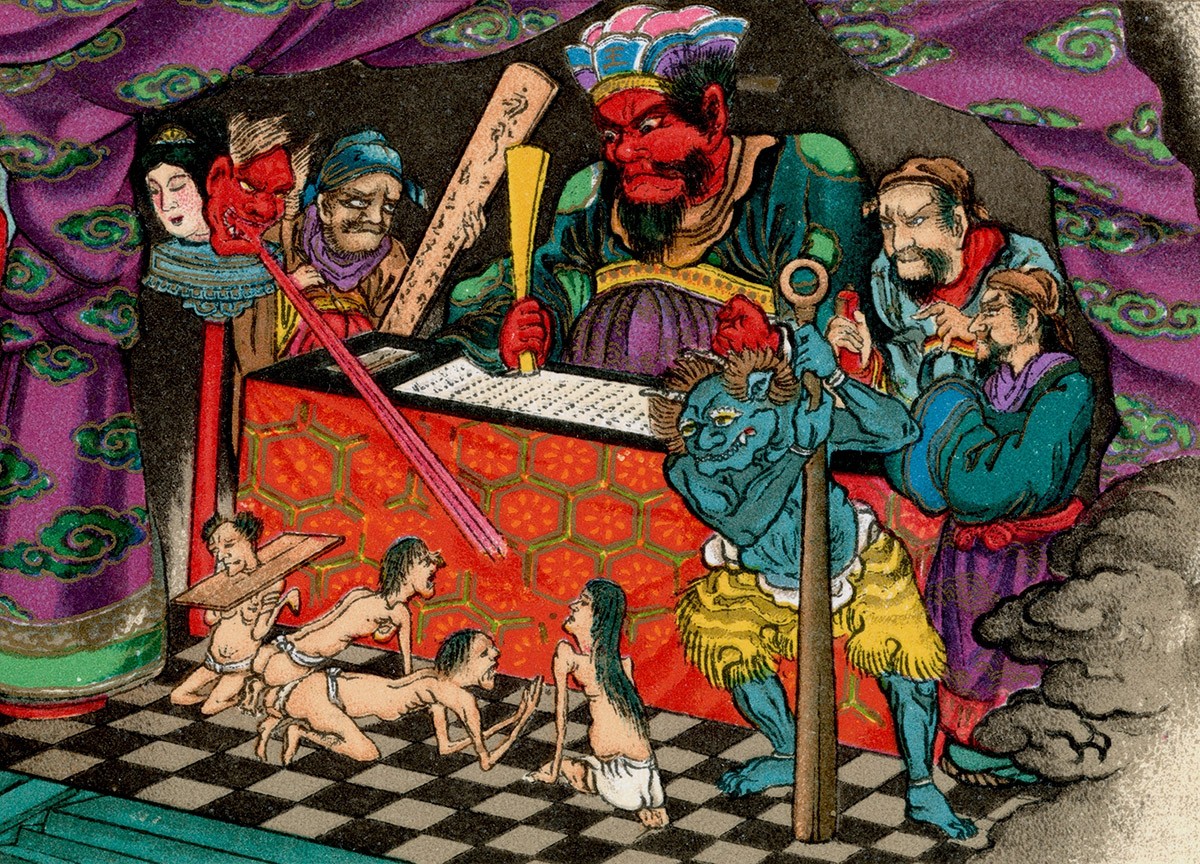
Hell is considered a place where those who have accumulated evil deeds fall after death and suffer. It is said that the deceased are judged for their sins in life by the Ten Kings, after which oni (demon) prison guards actually administer punishments. The Ten Kings are ten rulers who judge the deceased in the Buddhist afterlife, each with different roles, and are important figures in determining punishments in Hell.
"Hozuki's Coolheadedness" depicts a detailed structure of Hell based on Buddhist concepts. Hell is divided into the "Eight Great Hells" and the "Eight Cold Hells," with numerous departments existing within. For example, there are departments such as the "Records Division" and the "Tengu Police," which manage and monitor the deceased. These departments play crucial roles in maintaining order in Hell.
Difference Between Hell and Yomi (underworld)
Yomi is the afterlife in Japanese mythology, considered to be the place where the souls of the dead go. Yomi is a place where the deceased reside while still carrying the karma from their previous life, and it's a concept distinct from Hell. While Hell is a place of punishment and reflection for sins, Yomi is seen more as a spiritual transition point for the deceased.
👉 Read Japanese myths related to "Yomi"
How Many Hells Are There in Japan? What Are the Sins of the Deceased Who Fall into the Eight Great Hells?
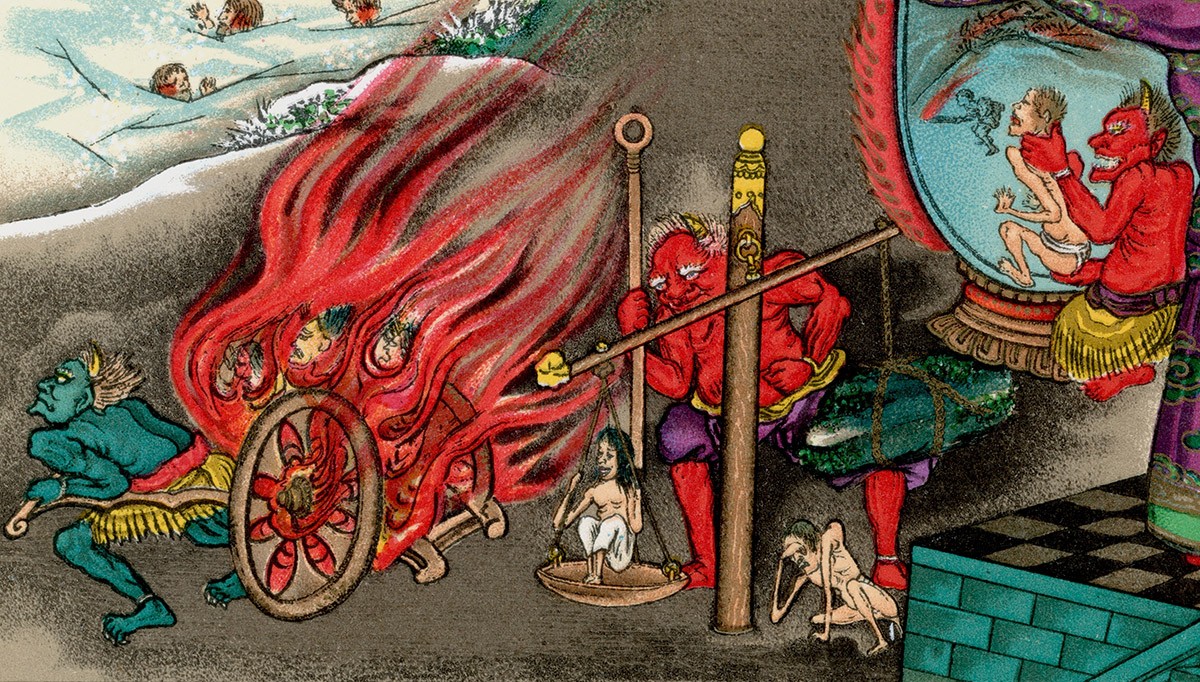
The Eight Great Hells (Eight Hot Hells) are characterized by suffering due to heat. There are eight of these hells, each tormenting sinners with different levels of heat.
Toukatsu Hell (Reviving Hell)
A hell where those who have committed the sin of killing are said to fall. In the "Unhappy Place Hell"(不喜処地獄) where those who abused animals fall, animals serve as prison guards, and hell-specific creatures like "needle-mouthed insects" also appear.
Kokujou Hell (Black Line Hell)
A hell where those who have committed theft in addition to killing are said to fall.
Shugou Hell (Rounding Up and Crushing Hell)
A hell where those involved in the sin of sexual misconduct are said to fall. In the series, there's a pleasure district called "Shugou Red-Light District" within this hell, where kitsune (fox spirits) and others run establishments.
Kyoukan Hell (Howling Hell)
A hell where those who have engaged in problematic behavior related to alcohol are said to fall. It has aspects of a modern facility for dealing with alcohol dependence, and there have been reforms regarding the treatment of the deceased.
Daikyoukan Hell (Great Howling Hell)
A hell where liars are said to fall. It's a place where many individuals involved in fraud or political lies are sent, and it's an extremely large and noisy hell.
Shounetsu Hell (Heating Hell)
A hell where those who have committed the sin of wrong views are said to fall. It's for those who have deceived others or engaged in immoral acts.
Daishounetsu Hell (Intense Heating Hell)
A hell where those involved in sexual sins are said to fall. Various dangerous insects and creatures appear, and the environment is so harsh that even the prison guards need special equipment.
Abi Hell (Avici Hell)
The lowest level of hell, where the deceased who have committed extremely grave sins fall. It's also called Muken Hell (Incessant Hell).
What Are the Eight Cold Hells? Are There Places in Hell Where One Is Judged by Cold as Well?
The Eight Cold Hells are where those who have committed sins suffer in extremely cold environments. There are eight different hells, each inflicting suffering with varying degrees of coldness. As the name suggests, the main characteristic is the pain caused by cold. The specific names and details of the Eight Cold Hells are not generally well-known, but it is said that the suffering increases according to the degree of coldness.
The Eight Cold Hells are composed of the following 8 layers, and the deceased are sorted according to the severity of their sins:
1. Abuda
2. Nirabuda
3. Asetta
4. Kakaba
5. Kokoba
6. Ubara
7. Hadoma
8. Makahadoma
How Does Japan's Afterlife Differ from Foreign Concepts of the Afterworld?

When hearing about "hell," many people might think of the afterlife in Christianity or Greek mythology, such as "Hell" or "Hades." Compared to these underworlds, Japanese hell has significant differences in its structure and worldview.
The Western concept of "Hell" is rooted in Christianity, considered a place where sinners receive eternal suffering through God's judgment. Hell is symbolized by flames and torment, and is thought to be a place where sinners cannot receive salvation from God.
The underworld "Hades" in Greek mythology is also a place where souls quietly spend their afterlife, and it was believed that all the dead, both good and evil, would go there.
On the other hand, Japanese hell, especially as depicted in "Hozuki's Coolheadedness," has an extremely "organized" structure where the deceased are assigned based on the type and severity of their sins. It is divided into detailed layers such as the Eight Great Hells and the Eight Cold Hells, each with specialized punishments and management systems.
Introducing "Hell" Spots Across Japan
Oita Prefecture | Beppu Jigoku Meguri (Beppu Hell Tour)
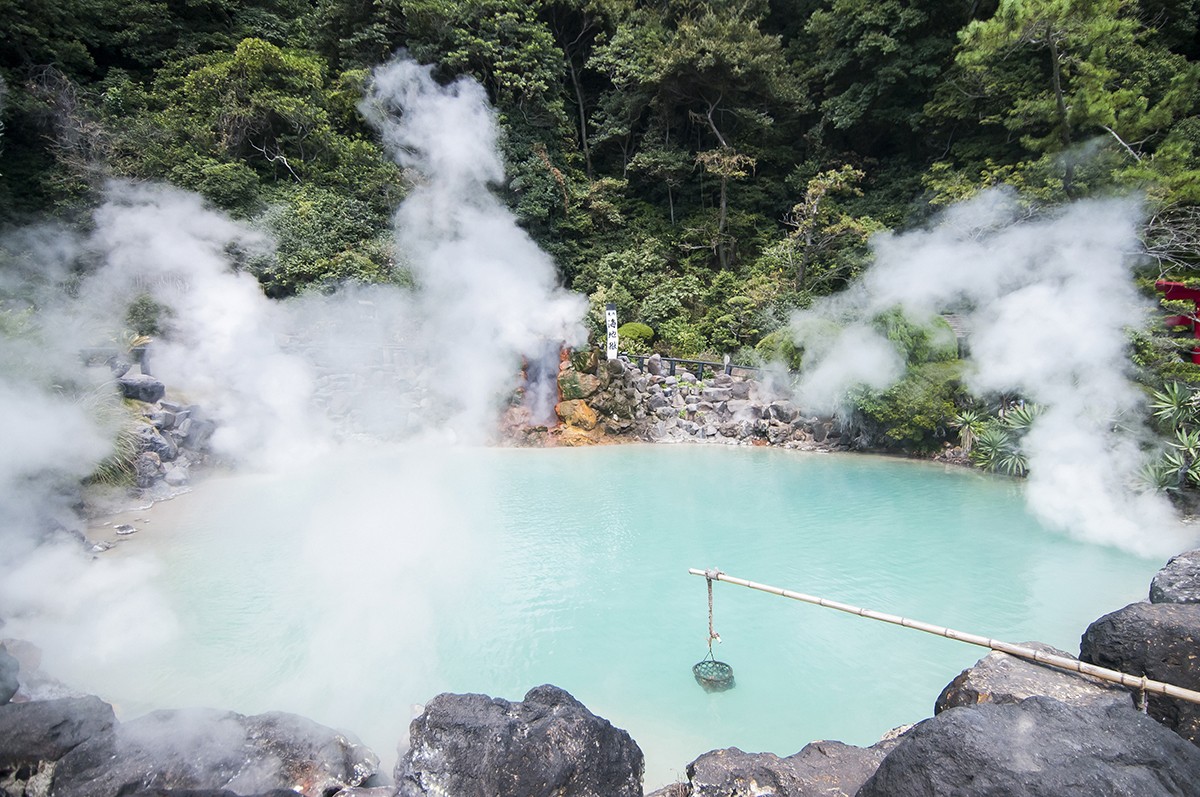
The "Beppu Jigoku Meguri" in Beppu City, Oita Prefecture, famous for its hot springs, is a tourist attraction where you can experience the intense power of nature befitting the name "hell." There are seven unique "hells," each with its own character, such as the "Umi Jigoku" (Sea Hell) where boiling water gushes out, the bright red "Chi-no-ike Jigoku" (Blood Pond Hell), and the "Tatsumaki Jigoku" (Tornado Hell) where you can see geysers. It's a spot where you can feel the Earth's energy up close, offering an experience beyond typical hot spring tourism. Many of these hells also offer gourmet treats like onsen eggs and steamed puddings, making them popular with families.
👉[Discount with KKday] Beppu Jigoku Meguri|All-Access Ticket / Advance Ticket|Same-Day Use Available
Beppu Jigoku Meguri
- Address: Kannawa, Beppu City, Oita Prefecture
- Access: About 20 minutes by Kamenoi Bus (routes 2, 5, 24, 41 / bound for Kannawa) from JR Beppu Station West Exit, get off at "Umijigoku-mae" bus stop, about 1 minute walk.
- Admission Fee:
Common admission ticket (access to 7 hells): Adults (High school students and above): 2,400 yen, Children (Elementary and Junior high school students): 1,200 yen
Individual admission ticket: Adults: 500 yen, Children: 250 yen - Business hours: 8:00-17:00 (Open all year round)
- Website: https://www.beppu-jigoku.com/
Hokkaido | Noboribetsu Jigokudani (Hell Valley)
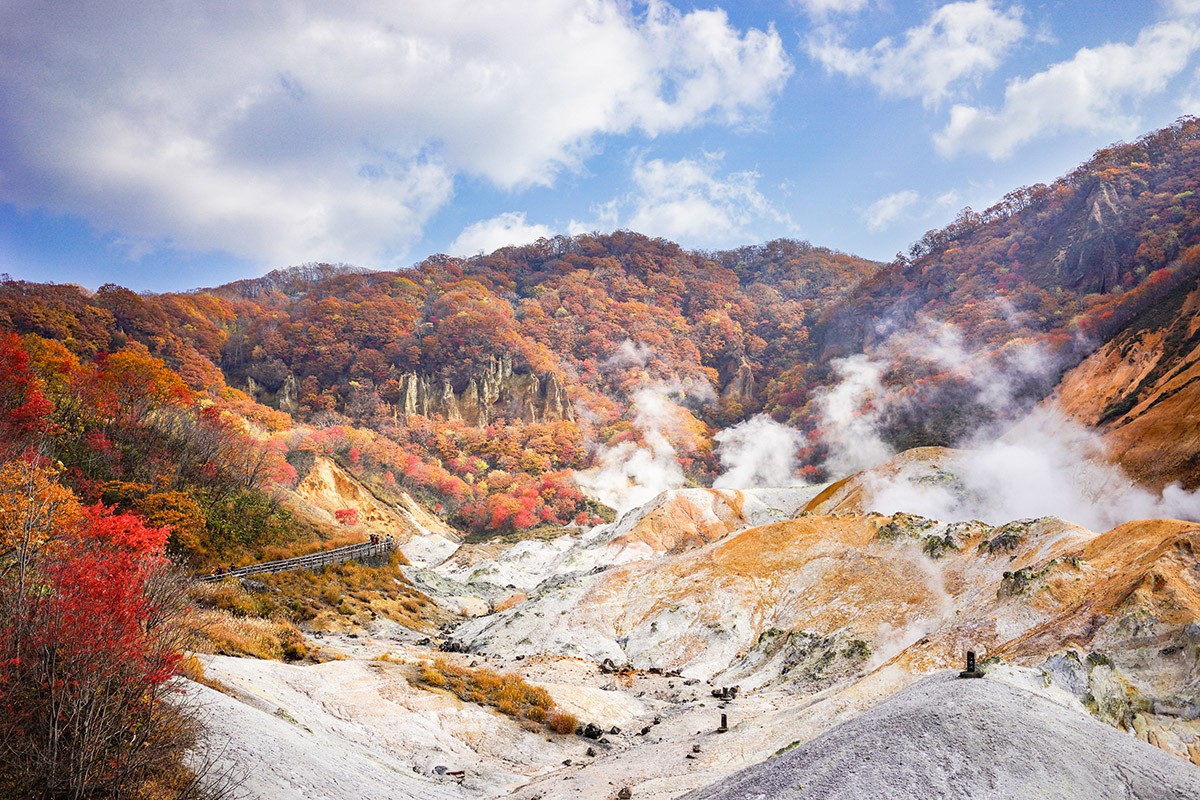
"Noboribetsu Jigokudani" (Hell Valley), spread across the source of Noboribetsu Onsen in Hokkaido, is a spot characterized by its desolate landscape formed by volcanic activity. Countless fumaroles emitting white smoke and gushing hot water create a scene reminiscent of "hell." At night, the illuminated "Demon's Path" offers an enchanting atmosphere. This spot is recommended for those who want to experience the natural beauty of hell.
Noboribetsu Jigokudani
- Address: Noboribetsu Onsen-cho, Noboribetsu City, Hokkaido
- Access: About 15 minutes by bus from JR Noboribetsu Station
- Admission: Free
- Opening hours: Year-round
Chiba Prefecture | Jigoku-nozoki (Hell's Peek)
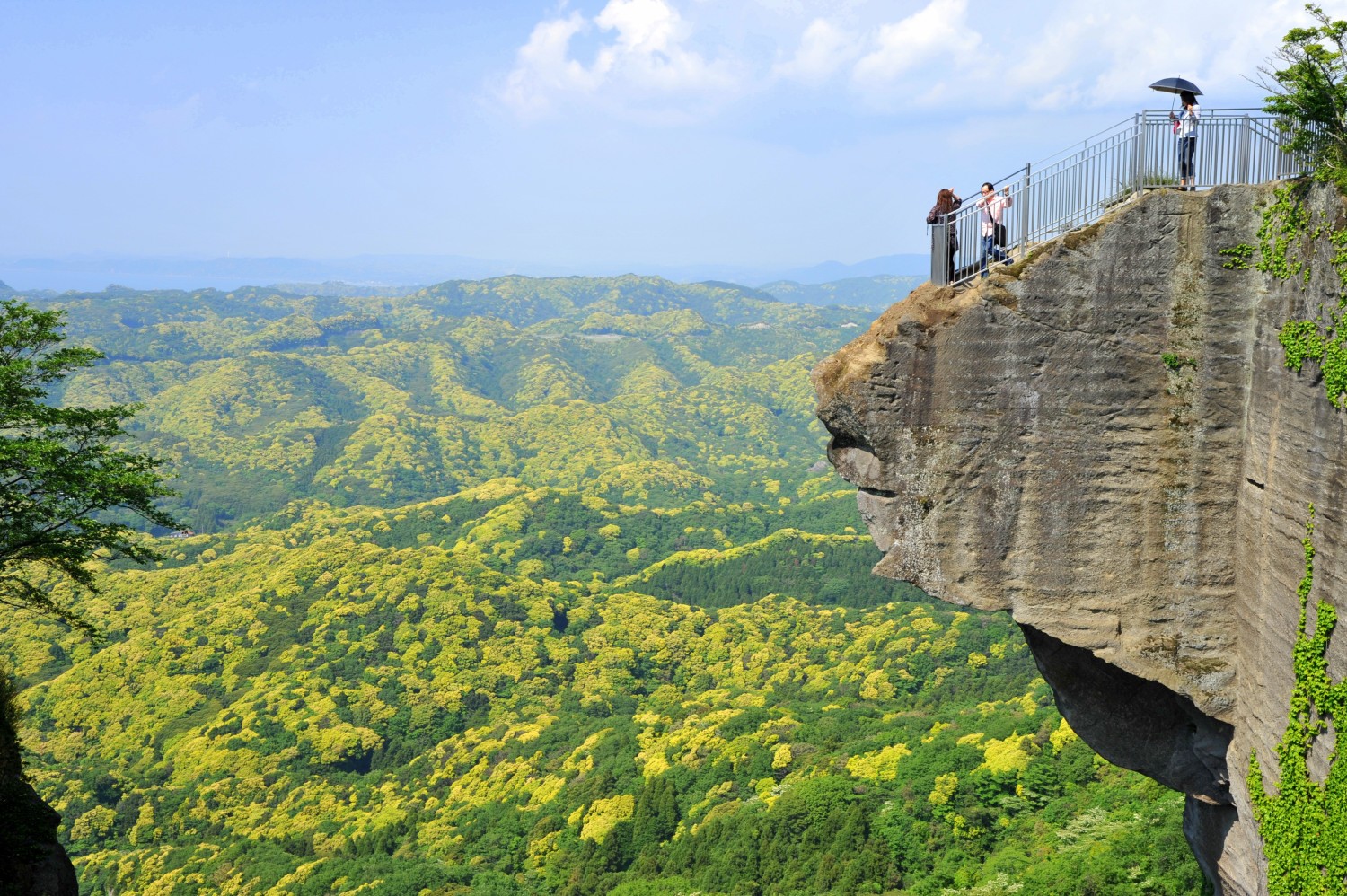
"Jigoku-nozoki" (Hell's Peek) on Mount Nokogiri in Chiba Prefecture is an observation deck set on a rock jutting out from a sheer cliff. With steep cliffs at your feet and a spectacular view of Tokyo Bay below, it's a thrilling spot that truly feels like "hell" for those afraid of heights. Nihonji Temple, where this observation deck is located, features Japan's largest stone Buddha "Yakushi Rurikō Nyorai" and offers the charm of experiencing both nature and Buddhist culture simultaneously. It's a "hell" worth visiting for those with a bit of courage and a sense of adventure.
Jigoku-nozoki
- Address: Mount Nokogiri, Kyonan-machi, Awa-gun, Chiba Prefecture
- Access: About 8 minutes on foot from JR Hamakanaya Station on the Uchibo Line to the Nokogiri Ropeway base station, then about 4 minutes by ropeway to the summit
- Admission Fee:
Nokogiri Ropeway: Adults (Junior high school students and above): Round trip 1,200 yen, One way 650 yen; Children (Elementary school students): Round trip 600 yen, One way 320 yen
Nihonji Temple admission: Adults: 700 yen, Children (4-12 years old): 400 yen - Business hours:
Nokogiri Ropeway: February 16 - November 15: 9:00-17:00, November 16 - February 15: 9:00-16:00
Nihonji Temple: 9:00-16:00 (Last entry 15:00) - Website:
Nokogiri Ropeway: https://www.mt-nokogiri.co.jp/pc/p010000.php
Nihonji Temple: http://www.nihonji.jp/
🚅 Book your Shinkansen tickets on NAVITIME Travel!👉Click here
😄Make your trip to Japan more comfortable with NAVITIME eSIM! 👉Click here
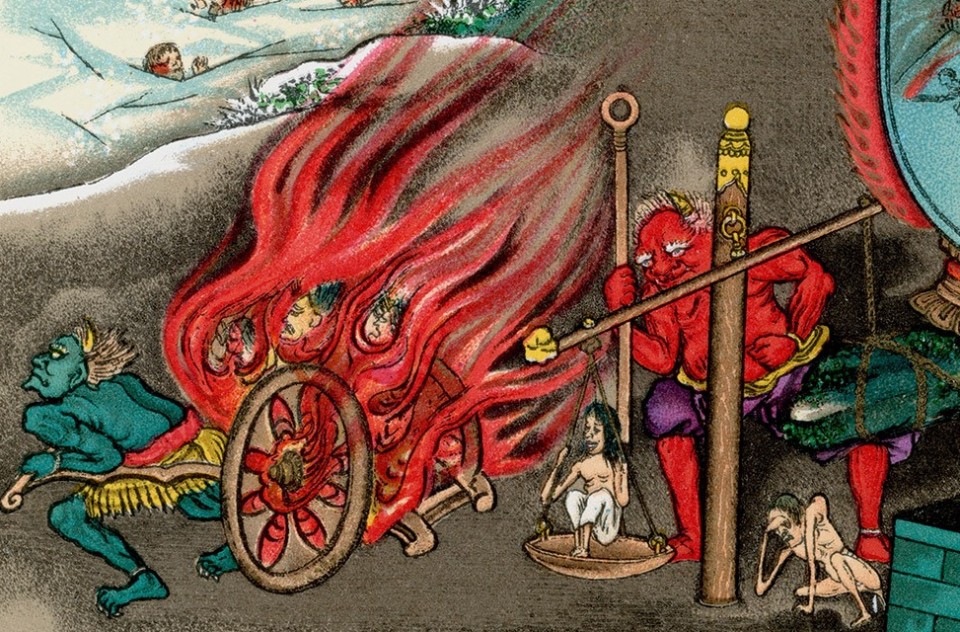
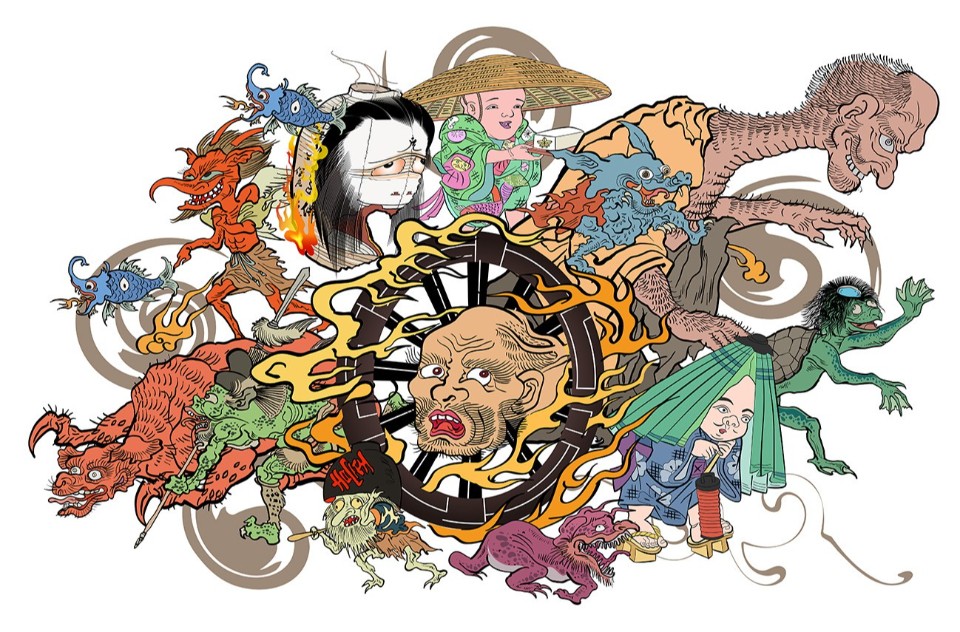

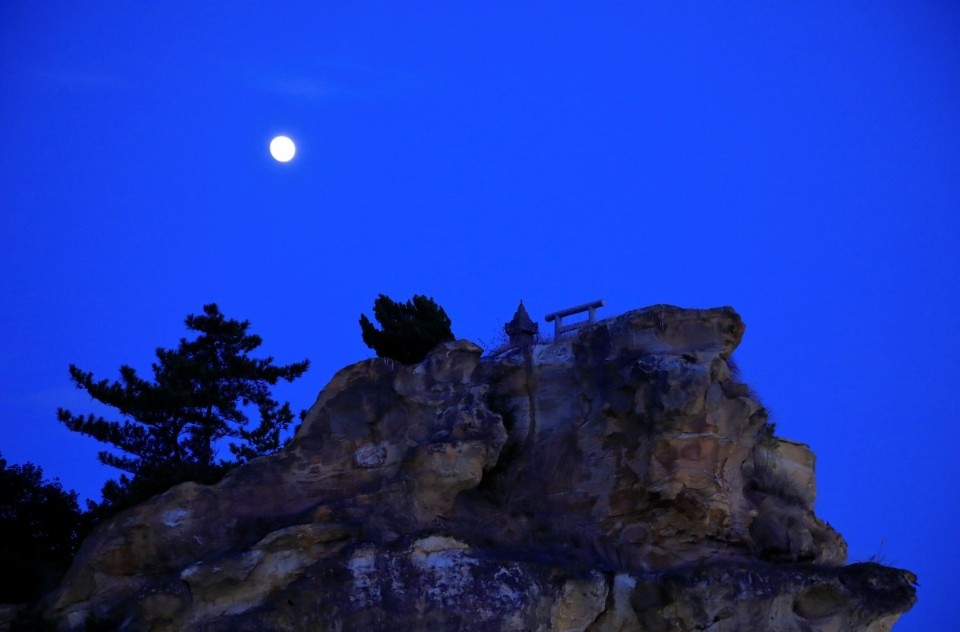
Comments